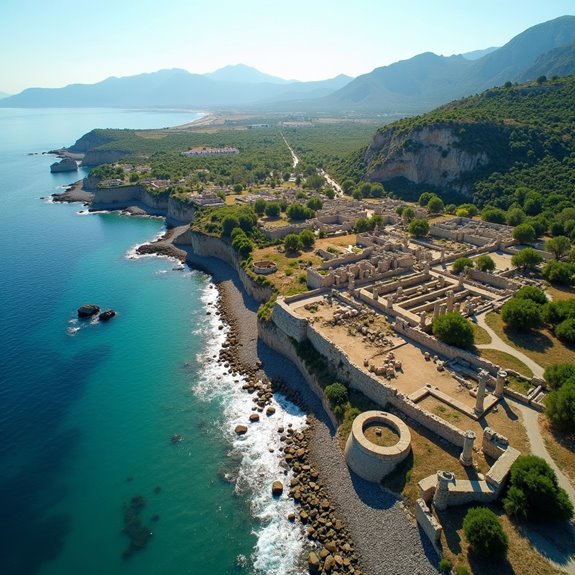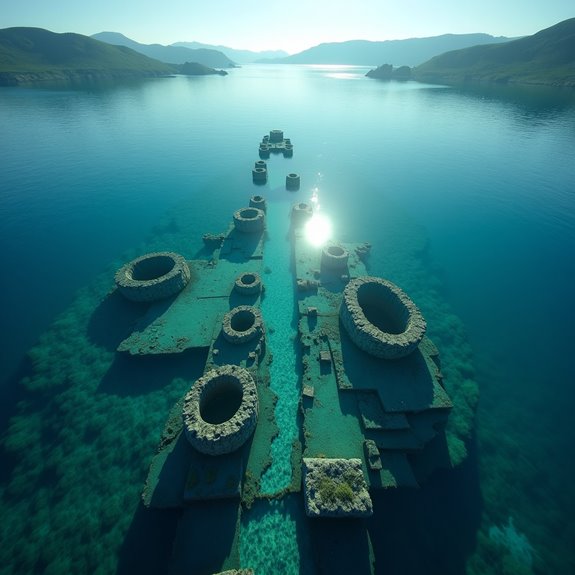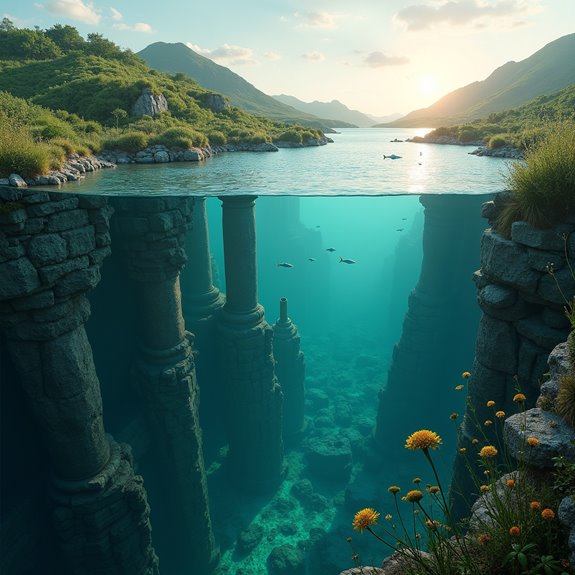The Lost City of Helike in Greece
The Lost City of Helike, an ancient Greek metropolis, vanished beneath the waves around 373 BCE after a catastrophic earthquake and subsequent tsunamis. Once a vibrant hub, its sudden disappearance has made it a focal point for historians and archaeologists alike. Recent discoveries offer glimpses of its past, but many questions about its demise remain unanswered. What secrets might still lie buried in the depths of the Gulf of Corinth?
Introduction

Located beneath the waves of the Gulf of Corinth, the Lost City of Helike remains one of Greece’s most intriguing archaeological mysteries. Once a vibrant city known for its wealth and cultural significance, Helike vanished during a catastrophic event in ancient times. Throughout history, scholars and archaeologists have speculated about its fate, sparking curiosity and exploration. Legends speak of the city being swallowed by the earth, leaving little trace behind. However, recent discoveries hint at its possible location, reigniting interest in Helike’s secrets. As researchers plunge into the depths of the Gulf, they seek answers to what truly happened to this ancient metropolis. Their findings could reveal essential insights into the region’s history and the cities that once flourished there.
Ancient City Submerged by Earthquake

When a powerful earthquake struck around 373 BCE, it released devastation that would forever alter the fate of Helike. This catastrophic event, accompanied by violent tsunamis, swallowed the city whole, rapidly submerging its buildings beneath the waves. Citizens who once thrived in this bustling urban center lost their lives or fled into the chaos. The earthquake’s intensity shook the very foundations of Helike, leading to its abrupt disappearance from the maps of ancient Greece. Over time, the city transformed into a myth, becoming a symbol of nature’s wrath and human vulnerability. Modern archaeologists still search for signs of this lost civilization, unearthing fragments of history that hint at the once vibrant life that thrived before the catastrophic disaster struck.
Notable Cases or Sightings

Over the centuries, tales of Helike’s tragic fate have sparked interest and speculation, leading to various notable cases and sightings linked to its submerged ruins. In 2001, marine archaeologist Dr. Petros Tzimopoulos claimed he identified ruins off the coast of Helike, stirring excitement among historians and treasure hunters alike. Sightings of unusual structures on sonar scans fueled theories about the city’s layout and its sudden disappearance. Additionally, local fishermen have recounted tales of encountering scattered artifacts while traversing the region. However, these accounts remain anecdotal and unverified. Despite this, they continue to captivate those fascinated by the mystery of Helike, with ongoing explorations seeking proof of the lost city beneath the waves.
Common Theories or Explanations
As interest in Helike’s disappearance grows, several theories have emerged to explain the city’s tragic fate. Many historians believe a massive earthquake struck the region around 373 BC, triggering a devastating tsunami that swallowed Helike whole. Others suggest volcanic activity could have played a role, with the nearby Aegean Islands experiencing eruptions during that period. Some researchers propose that a gradual subsidence of the land, caused by tectonic shifts or soil erosion, contributed to the city’s downfall. Additionally, the possibility of human error in city planning or neglect of the coastline may have exacerbated the disaster. These theories remain hotly debated, as archaeologists continue searching for definitive evidence of Helike’s final moments.
Frequently Asked Questions
What Archaeological Methods Were Used in Helike’s Discovery?
Archaeologists employed ground-penetrating radar, geomorphological studies, and underwater surveys to uncover the site’s remnants. They analyzed sediment cores and utilized ancient texts for clues, piecing together the city’s history and confirming its location beneath layers of sediment.
How Has Helike Influenced Modern Underwater Archaeology?
Helike’s discovery’s reshaped modern underwater archaeology, emphasizing the importance of interdisciplinary approaches. Researchers now utilize advanced technology, like sonar and robotics, to explore submerged sites, enhancing techniques for uncovering ancient civilizations lost beneath the waves.
Are There Any Tourist Attractions Related to Helike?
Yes, there are tourist attractions related to Helike. Visitors explore the archaeological site, admire exhibits showcasing artifacts, and enjoy guided tours highlighting the city’s history, making it a fascinating destination for history enthusiasts and travelers alike.
What Artifacts Have Been Found at the Helike Site?
At the Helike site, archaeologists discovered pottery shards, tools, and ancient coins. These artifacts provide valuable insights into the daily lives and culture of the inhabitants who once thrived in this submerged city.
How Does Helike Compare to Other Sunken Cities?
Helike’s unique blend of ancient craftsmanship and geological mystery sets it apart from other sunken cities. Unlike many, it showcases distinctive architectural styles and offers insight into the natural disasters that can engulf entire civilizations.


